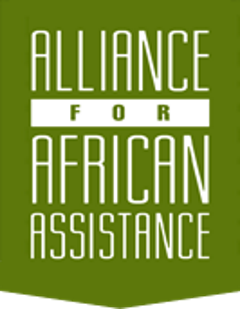
The Joan and Irwin Jacobs Music Center, formerly, Copley Symphony Hall, opened in 1929 as the Fox Theatre. The hall was conferred to the San Diego Symphony in 1984. Downtown's Symphony Towers was built around Copley Hall in 1989. The hall features an enormous pipe organ that is built into five walled chambers and was recently restored to its original splendor. The hall has a seating capacity of 2,248. When it opened in 1929, it had a seating capacity of 2,876.
Location:
San Diego Symphony750 B St.San Diego, CA 92101
For more information, please visit: www.copleysymphonyhall.com
- Details
- Hits: 4909

Diversionary Theatre was founded in 1986 to provide quality theatre for the lesbian, gay, bisexual and transgender communities. The mission of the theatre is to produce plays with gay, lesbian and bisexual themes that portray characters in their complexity and diversity both historically and contemporarily.
Diversionary Theatre is recognized as one of San Diego's best theaters. It is one of the most vibrant showcases of theatrical talent in the city.
The goal of the theatre is to continue telling the story of the LGBT community, while providing a home and venue for the remarkable talents of the San Diego's theater professionals.
Location:
4545 Park Boulevard
San Diego, CA 92116
For shows and tickets at this venue,
call: (619) 220-0097 or visit: www.diversionary.org
- Details
- Hits: 4676

Believing in the power of theatre to startle the soul, ignite debate and embrace the diversity of the community in which it serves, Cygnet Theatre Company is fearlessly committed to the dissection, examination and celebration of the human story through the medium of live theatre.
Cygnet's Old Town Theatre is conveniently located in the heart of Old Town San Diego State Historic Park. There are numerous restaurants, shops, museums and hotels all within walking distance.
Location:
Old Town San Diego
4002 Wallace Street
San Diego, CA 92110
For shows at this venue, please
call: (619) 337-1525 or visit: cygnettheatre.com/index.php
- Details
- Hits: 4470

Community Actor's Theater is a non-profit all-volunteer theatrical troupe dedicated to providing drama and a creative outlet to the Oak Park region. Started in 1982 CAT gives a voice to local playwrights and actors.
Mission:
Apart from the purely entertainment aspect of our activities, the goal of Community Actors Theatre is to make a high caliber of this art form available to the community. Additionally, they aim to educate and offer theatrical training through drama/theater workshops that are open to all ages. These efforts are then put into practice in the form of community talent showcasing.
The theater itself is an example of a grass roots effort to create a special place for members of the community to express themselves.
Location:
Community Actors Theatre
2957 54th Street
San Diego, 92105
For shows and tickets at this venue,
Call: (619)264-3391
or
Email:
or
Visit: www.communityactorstheatre.com
- Details
- Hits: 4690

The San Diego Repertory Theatre is downtown San Diego's resident professional theatre -celebrating year-round on our three stages and in their art galleries the diversity and creativity of their community. As the resident and managing company of the Lyceum Theatre, they produce and host over 300 events and performances a year.
Their mission is informed by a commitment to artistic virtuosity, partnerships with singular artists and their inquisitive neighbors, and lively conversations about their role as citizens in the bi-national region they call home. They choose provocative works of theatre to inspire their audiences and artists to build the communication bridges needed to understand who they are today, and who they might become.
The company was founded in 1976 by Sam Woodhouse and D.W. Jacobs.
- Details
- Hits: 3757
Joomla!
Extensions
The Joomla! content management system lets you create webpages of various types using extensions. There are 5 basic types of extensions: components, modules, templates, languages, and plugins. Your website includes the extensions you need to create a basic website in English, but thousands of additional extensions of all types are available. The Joomla! Extensions Directory is the largest directory of Joomla extensions.
Components
Components are larger extensions that produce the major content for your site. Each component has one or more "views" that control how content is displayed. In the Joomla administrator there are additional extensions such as Menus, Redirection, and the extension managers.
Modules
Modules are small blocks of content that can be displayed in positions on a web page. The menus on this site are displayed in modules. The core of Joomla! includes 24 separate modules ranging from login to search to random images. Each module has a name that starts mod_ but when it displays it has a title. In the descriptions in this section, the titles are the same as the names.
Content Modules
Content modules display article and other information from the content component.
User Modules
User modules interact with the user system, allowing users to login, show who is logged-in, and showing the most recently registered users.
Display Modules
These modules display information from components other than content and user. These include weblinks, news feeds and the media manager.
Utility Modules
Utility modules provide useful functionality such as search, syndication and statistics.
Navigation Modules
Navigation modules help your visitors move through your site and find what they need.
Menus provide your site with structure and help your visitors navigate your site. Although they are all based on the same menu module, the variety of ways menus are used in the sample data show how flexible this module is.
A menu can range from extremely simple (for example the top menu or the menu for the Australian Parks sample site) to extremely complex (for example the About Joomla! menu with its many levels). They can also be used for other types of presentation such as the site map linked from the "This Site" menu.
Breadcrumbs provide users with information about where they are in a site.
Page 14 of 29









